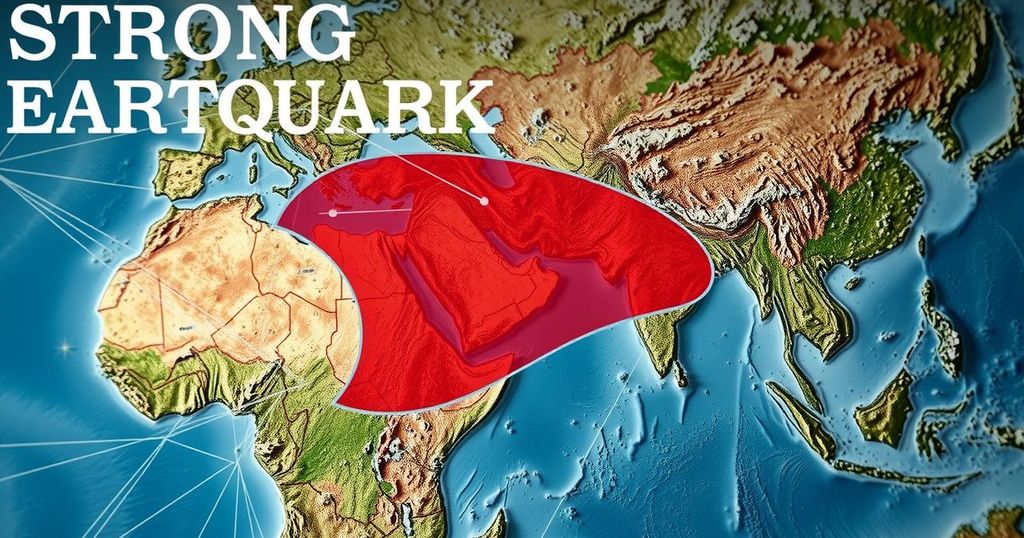Recent Earthquake Activity: A 6.1-Magnitude Event in Chile and Others Worldwide

On January 2, a 6.1-magnitude earthquake struck Calama, Chile, following a series of recent earthquakes including a 4.7-magnitude quake in California and multiple tremors in Alaska. The USGS reported that people felt these events across various regions, emphasizing ongoing seismic activity worldwide.
On January 2, a significant seismic event registering a magnitude of 6.1 was recorded in Chile, centered in the city of Calama, approximately 99 kilometers beneath the earth’s surface. The United States Geological Survey (USGS) documented 25 reports from individuals who experienced the tremors at the time of the announcement. This event occurred shortly after a 4.7-magnitude quake in California on January 1, which was located in Cobb at a shallow depth of 1.1 kilometers.
In the preceding days, seismic activities in Alaska included a 3.3-magnitude earthquake on December 30, with its epicenter in Nikolski at a depth of 39.5 kilometers, and another 3.3-magnitude shake in Fort Bidwell, California, at a depth of 3.4 kilometers. These tremors were not isolated, as they followed a more substantial 6.7-magnitude earthquake on December 27 near the Kuril Islands, reported at a depth of 162.6 kilometers.
Moreover, previous earthquakes in Alaska and California were noted, such as a 3.6-magnitude quake in McCarthy, Alaska on December 26, and a 3.0-magnitude event in Clayton, California on December 25. Notably, a 5.9-magnitude earthquake was also recorded in Cuba on December 23, with its epicenter in Guisa at a depth of 22.2 kilometers, adding to the recent spate of seismic activities across various regions.
The topic of earthquake occurrences is increasingly vital, particularly as they pose significant risks to both life and infrastructure. The recent series of earthquakes across multiple locations such as Chile, California, and Alaska serves to highlight the persistent nature of seismic threats. Seismologists and emergency management agencies maintain keen interest in monitoring such events, particularly how they relate in time and magnitude. The United States Geological Survey plays a crucial role in providing timely data and analysis, essential for understanding and preparing for these natural disasters.
In summary, the reported seismic activities, including the notable 6.1-magnitude earthquake in Chile and subsequent events in California and Alaska, underscore the frequent and unpredictable nature of earthquakes globally. The documented series of earthquakes serves as a reminder of the importance of preparedness and awareness regarding seismic risks. The role of organizations such as the USGS is critical in delivering real-time information that aids both public awareness and scientific understanding of these natural occurrences.
Original Source: wsrw.iheart.com








